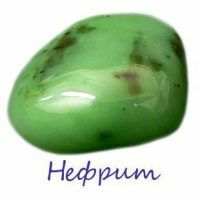
Nephrite - unique in its physical properties, an ornamental stone, which has gained immense popularity among the masters of stone carving and lithotherapists. The sacred stone of China, used in ancient times and for ritual, and for religious, and for magical rites.
- Contents of the stone:
- Description of the mineral
- Description of the mineral
- The chemical composition and physical properties of the
- stone Jade varieties
- Jade deposits
- The healing properties of the mineral
- The magical properties of the jade
- Jade and the zodiac signs
- Application of the gem
- Interesting facts about the stone
- How to distinguish natural jade from a fake
- Photos of jade and products from it
History of stone
As a result of conducted archaeological research it was found that people useAli jade from Neolithic times. At first - as a material for the manufacture of particularly strong tools and weapons, and later - for the manufacture of jewelry and household items.
In ancient times, in Greece, and in New Zealand, and in Russia( on the territory of the Chita region and Buryatia), ancient jade arrowheads were found, ancient similarities of modern hammers, knives and axes made of dark green jade.
The same perfection in the processing of jade reached the Indian and Chinese masters, for which the nephrite became an indispensable material in the manufacture of art products recognized as true masterpieces of stone carving.
The most ancient decorations and amulets made during the reign of the Shan dynasty and dating from 1523-1028 BC are distinguished by an exceptional grace. Among them - jade booklets with messages to heavenly deities and zoomorphic decorative figures, which served the Chinese amulets and charms.
Jade was widely used in everyday life. Before the appearance of porcelain from it, cups, cups, chickens and other interior items were made.
In ancient China, jade was so highly valued that its plates were replaced by coins. In addition, in China it was used as an elite finishing material and decorated them with imperial palaces and royal tombs.
In Russia( in the East Sayan) large deposits of jade were discovered in 1824, and in 1862 and 1867 the best samples of Russian stone were exhibited at exhibitions in London and Paris.
to contents ^Description of mineral
Nephrite is a valuable first-class jewelry and ornamental stone, the distinguishing feature of which is high strength, uniformity, variety of color and pattern, translucency and melodic sound in the plates. The color of the mineral is from a delicate gray-white, apple-green to a rich dark green, emerald.
The name of the stone comes from the Greek word "nephros"( nephros), which translates as "kidney".This naming of the stone is not accidental, becausein ancient times it was considered the best amulet from kidney diseases. Firstly, because it resembled a human kidney in its appearance, and secondly, because of its high heat capacity, it kept the heat for a long time and really helped to reduce the pain in the kidney area.
The current name of the stone "jade" appeared in 1863.Until that time, beginning in 1647, jade and jadeite were treated with the same name - "jade".
Other names of this mineral: kidney stone, stone tairov, Canadian greed, stone Māori.
to contents ^Chemical composition and physical properties of
stone Jade refers to rocks of cryptocrystalline composition. He belongs to the family of so-called amphiboles - a group of minerals subclass of chain silicates.
In its chemical composition, nephrite is a compound of silicon oxide( silica) with impurities of iron, magnesium, vanadium and chromium.
Chemical formula of nephrite: Ca2( Mg, Fe) 5 [Si4O11] 2 [OH] 2.
The basic composition of jade includes:
- silica( SiO2) - 55-57%;
- calcium oxide( CaO) - from 11.8 to 16%;
- magnesium oxide( MgO) - from 18.8 to 25.7%.
As impurities in the composition of jade can include:
- iron oxide( FeO) - from 0.1 to 8%;
- alumina( AI2O3) - from 0.1 to 5%;
- hydrogen oxide( H2O) - up to 4%;
- sodium oxide( Na2O) - up to 2%;
- manganese oxide( MnO) - up to 0,25%;
- potassium oxide( K2O) - up to 2%.
The color of jade is determined by the color of jade - it can be almost white, but more often green in various shades: yellowish, grassy, emerald, marshy. Less common is black jade, and occasionally come across copies of blue and red, but they are very rare. Often the color of the stone is heterogeneous, but the jade with a one-color color is more valuable.
loading. ..
Usually, jade forms a dense opaque or translucent shale or massive rock of a matted fibrous microstructure with a silky, glassy sheen.
A remarkable feature of this breed is its exceptional viscosity, and strength is comparable only with steel. The unique ability of thin nephrite plates to publish, at the touch, a gentle melodic sound is also interesting.
The hardness of jade on the Mohs scale is 5.5-6.5, and the density is 2.8-3.4 g / cm3.
to contents ^Jade varieties
Depending on the texture, these types of jade are distinguished:
- Homogeneous jades are a group of minerals that are characterized by uniform coloration and high translucency. In color, the uniform jade is:
- White - nephritis is snow-white with a light bluish, greenish, grayish or yellowish hue.
- Green - jade, painted in bright green tones. Relate to high-grade jewelry and ornamental materials.
- Grayish-green - jade of a special smoky shade and a muted green tone.
- Gray - jade with an uneven alternation of dark gray and light gray areas. They are rare.
- Jasmine spotted - jade with spotted texture due to the uneven spotted distribution of minerals that make up their composition. A distinction is made between the following varieties:
- Tobacco jade is a spotted-colored jade of greyish-greenish-brown color.
- Jade spotted greyish-green is a spotted-colored variety of jade with a characteristic patchy and wavy-striped texture of a soft, uneven grayish-green color with a light bluish tinge.
- Jade spotted dark green - dense patchy-colored, not translucent or partially translucent breed with a landscape pattern.
- Jade spotted bluish-green - not translucent or slightly translucent in the plates of a dark blue-green rock.
- Nephrite small-spotted - a massive unevenly colored slightly translucent rock with the presence of dark, light gray, white, dark green and bright green spots.
loading. ..
- Jagged spotted - nephrites with abundant impregnations of chlorite and ore mineral and frequent transitions from serpentinite to jade.
Jade deposits
The main deposits of jade are in Russia, Germany, Switzerland, Italy, Central Asia, China and India.
to contents ^The healing properties of the mineral
Ancient healers considered jade a panacea for all diseases. They recommended carrying it on the body and consuming powder made from it for the prevention and treatment of all known ailments.
And today this stone is used by folk healers as an effective healing agent. Particularly useful, according to lithotherapists, to apply nephritis in diseases of the kidneys and urinary tract.
It is also believed that nephrite is able to:
- cleanse the body;
- to heal diseases of the stomach and intestines;
- normalize sleep;
- to get rid of insomnia;
- facilitate delivery;
- to help with eye diseases;
- relieve back pain.
Popularity and massage from jade. It is believed that such a massager is able to tonify and tighten the skin of the face and body.
Possess products of jade and analgesic effect, and the ability to treat inflammatory processes, due to which they are recommended to apply to sore spots with bruises, sprains, inflammations.
to contents ^Magic properties of jade
Since ancient times, nephrite is a favorite stone of alchemists, magicians and sorcerers. It was used in the magic and religious rites of different peoples:
- In China, it was considered a stone of Wisdom, Eternity of Heaven and Earth.
- The ancient Aztecs used it during sacrificial rituals.
- Buddhists believed that it was on the jade throne that the Buddha sat.
- The priests of the Sumerians used articles from jade as magical attributes.
- Ancient Mongols decorated their clothes and weapons with jade products as amulets.
Nephrite is credited with five basic magical properties, which he is able to bestow upon his owner:
- Mild-heartedness.
- Moderation and fairness.
- Deep knowledge of sciences.
- Courage.
- Purity of thoughts.
It is believed that nephrite is able to help a person understand his true destiny and stabilize the psyche, it is easy to perceive the world around him and quickly implement his plans.
to the table of contents ^Jade and zodiac signs
Many astrologers claim that jade fits all the signs of the zodiac and is able to give good luck in business. And most of all this stone is favorable for Dev and Libra. The virgin jade will give family happiness, and Libra will prolong life.
to the table of contents ^Application of the gem
Due to its physical qualities, jade is an excellent ornamental stone. It is used as a unique material for the manufacture of a wide variety of jewelry and decorative and artistic products - original sculptures, amulets, souvenirs. All over the world, famous Chinese delicate jade products, jade vases and magic balls are appreciated. Produce in China from jade and musical instruments for important religious ceremonies.
Apply this unique stone and in medicine.
to the table of contents ^Interesting facts about the stone
- In ancient China, jade plates produced special "passports" for the emperor's emissaries.
- In Russia in the nineteenth century, 1 kilogram of emerald-green jade was estimated at 1,000 gold rubles.
- The famous Chinese Buddha statue of enormous dimensions( height over 6 m) is made of white jade.
- The largest product of dark green jade is in Samarkand, in the mosque Gur-Emir. This is the tombstone of the tomb of Tamerlane.
- A sarcophagus of Tsar Alexander III is also cut out of a piece of Siberian jade.
- In esoteric practice, nephrite is recognized as an indicator of spiritual growth, and its darkening is considered a harbinger of unhappiness. Changes in the appearance of the stone indicate that a person, in order to avoid unhappiness, it is time to correct his sins.
How to distinguish natural jade from forgery
To distinguish natural jade from forgery will help the knowledge of its physical properties.
- Very high strength. Natural jade can neither be cut nor scratched.
- High heat capacity. Natural jade retains heat very long even in cold water.
- Musical sound of plates. When the products come into contact with jade, you can hear a gentle melodic sound - no fake can so "sound".
- High light transmittance and fibrous pattern inside the stone. Looking through the jade to the light, you can see the original pattern of fibers inside the stone.
Photos of jade and its products
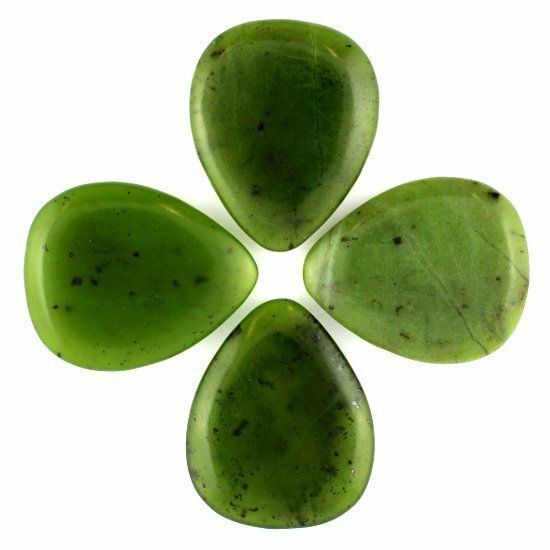
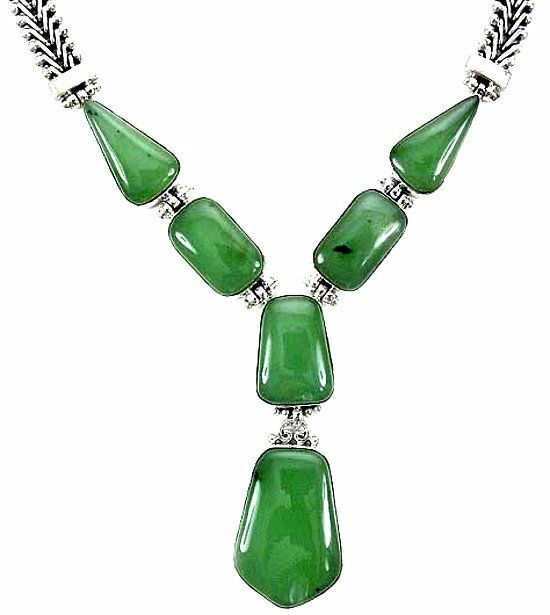
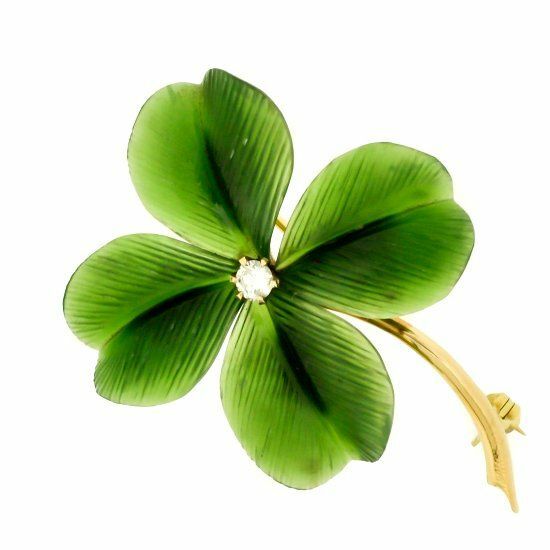
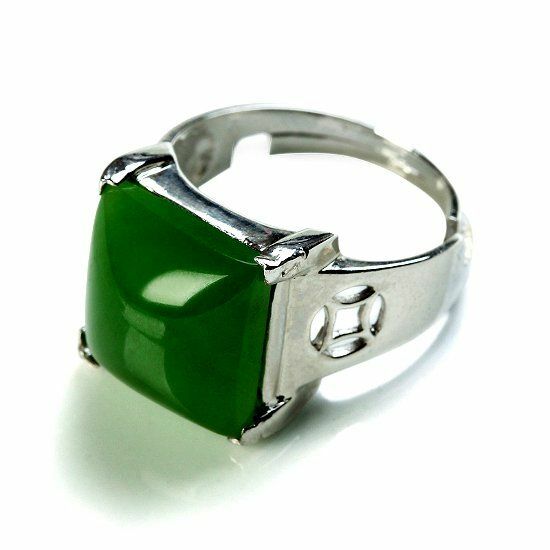
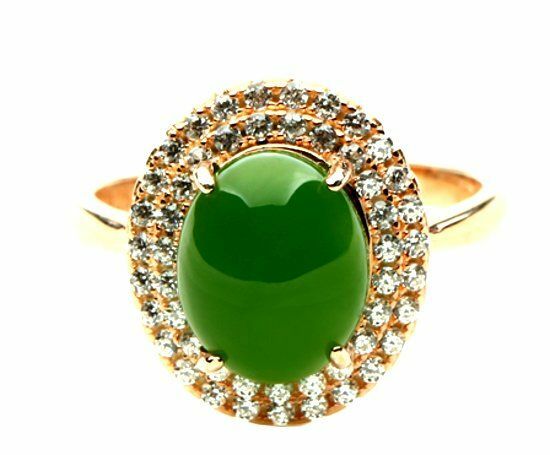
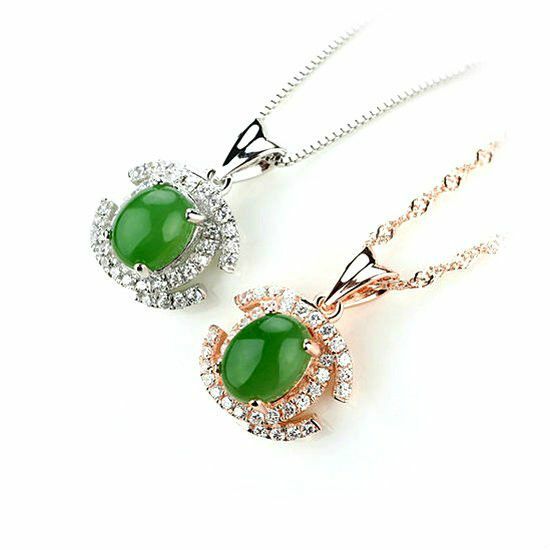
- Description of the mineral
